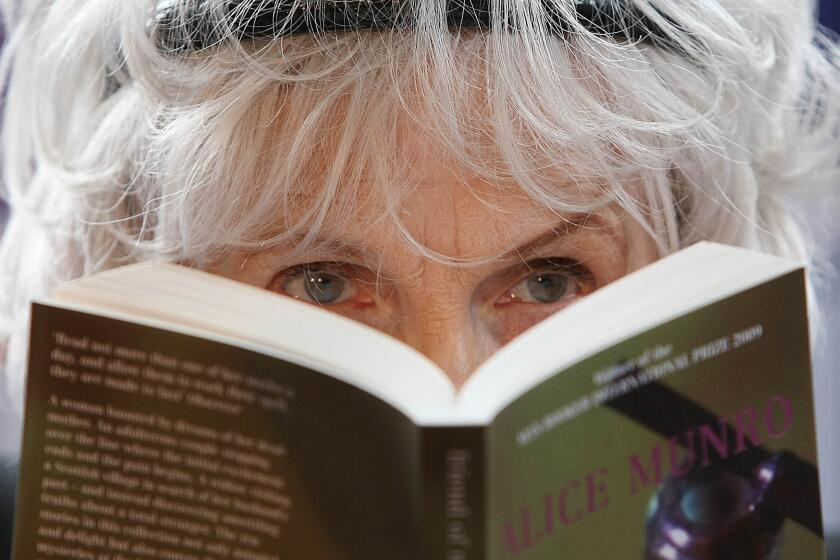THE DEAL OF THE CENTURY The Breakup of AT&T; <i> by Steve Coll (Simon & Schuster: $8.95) </i>
This highly readable account of the 10-year antitrust action brought against American Telephone & Telegraph Co. colorfully depicts the personalities of executives, lawyers, politicians and government officials involved in the legal fray. Basing his work on documents and numerous interviews with the competing parties, Steve Coll portrays the fledgling Microwave Communications Inc.’s decision to take on AT&T.;
Readers will not be surprised to hear that the battle for our current decentralized telecommunications system was not the product of a “single, coherent philosophy . . . or a farsighted public policy strategy.” Crucial decisions made in the ‘70s and early ‘80s were driven by “opportunism, short-term politics, ego, miscalculation, greed, and personalities.”
THE HISTORY OF MARY PRINCE A West Indian Slave, Related by Herself
edited by Moira Ferguson preface by Ziggi Alexander (Pandora Books/Methuen: $8.95) First brought forth by Methodist abolitionists as a moral fable and now resuscitated by feminist scholars as a unique narrative, “with no comparable account extant by a female West Indian slave,” Mary Prince’s “History” is indeed the story of “an indomitable self-made heroine.”
“The History of Mary Prince” was first published in 1831 by the British magazine Anti-Slavery Reporter. A West Indian black, Mary describes her life at the mercy of a series of abusive white slaveholders, the last of whom took her to England just as British abolitionists were waging the campaign to abolish slavery. Though Mary had earned sufficient money during her lifetime to buy her own freedom, her owners nevertheless refused to grant it. With the help of the Anti-Slavery Society, a petition on her behalf was received by Parliament in 1829, but her case was not resolved until the Emancipation Bill passed the House of Lords on July 31, 1833.
The document that is Mary’s narrative is a slim 37 pages, accompanied by a lengthy introduction and appendixes. Her story, though clearly pressed into the service of anti-slavery propaganda, rings true as she proudly reports having stood up to her owners: “I then took courage and said that I could stand the floggings no longer . . . . I had run away to my mother; but mothers could only weep and mourn over their children, they could not save them from cruel masters--from the whip, the rope, the cow-skin. (Her master) told me to hold my tongue . . . he did not, however, flog me that day.”
THE LIMITS OF SCIENCE by Peter Medawar (Oxford University Press: $8.95) Peter Medawar has written three felicitous, brief essays on the glory of the scientific enterprise and on the parameters of scientific inquiry. Science’s only limitation is in dealing with questions that do not “require validation by empirical evidence.” So-called “ultimate questions,” of the sort that children ask--such as: “How did everything begin?” “What are we all here for?” “What is the point of living?”--are, in Medawar’s view, beyond the explanatory competence of science and better suited to “metaphysics, imaginative literature or religion.” Nevertheless, Medawar sees science as a “great and glorious enterprise,” almost limitless in what can be achieved.
STEPS by Jerzy Kosinski
(Vintage Books: $5.95)
In this disturbing series of vignettes, most no longer than 3 to 4 pages, Jerzy Kosinski describes bizarre incidents of eroticism, rape, murder and revenge in precise, understated tones. A soldier uses passing civilians as target practice, with impunity: “They lay in the swaying grass like two surfers abruptly swept off their boards by an unpredictable wave.” A vagrant who’s been tormented by a farmer and other villagers becomes “their judge and executioner” as he buries fishhooks and crushed glass into newly baked loaves of bread: “Death continued to levy its toll, and children went on dying. Some of the peasants blasphemed God, whispering it was He Himself who had dispatched His only son, Jesus, to inevitable crucifixion, in order to redeem His own sin of creating so cruel a world.” Chilling, powerful, at times repelling in its choice of subjects, Kosinski’s writing is spare, precise, sharp as a knife as he portrays alienated, soulless human beings.
More to Read
Sign up for our Book Club newsletter
Get the latest news, events and more from the Los Angeles Times Book Club, and help us get L.A. reading and talking.
You may occasionally receive promotional content from the Los Angeles Times.






